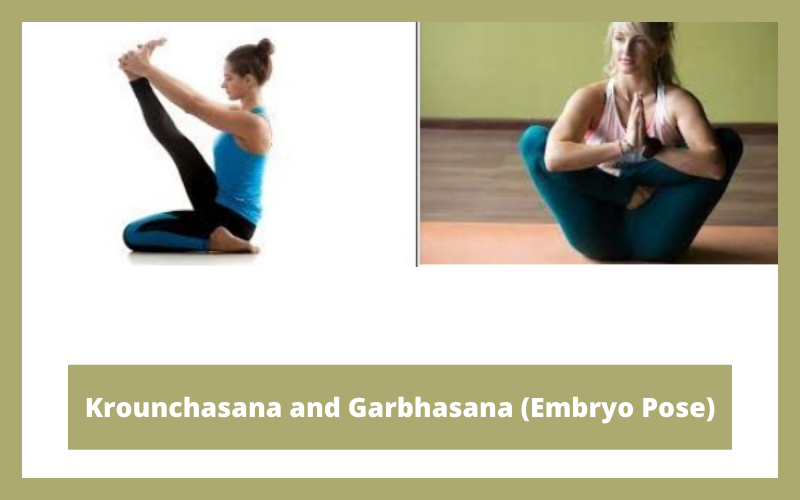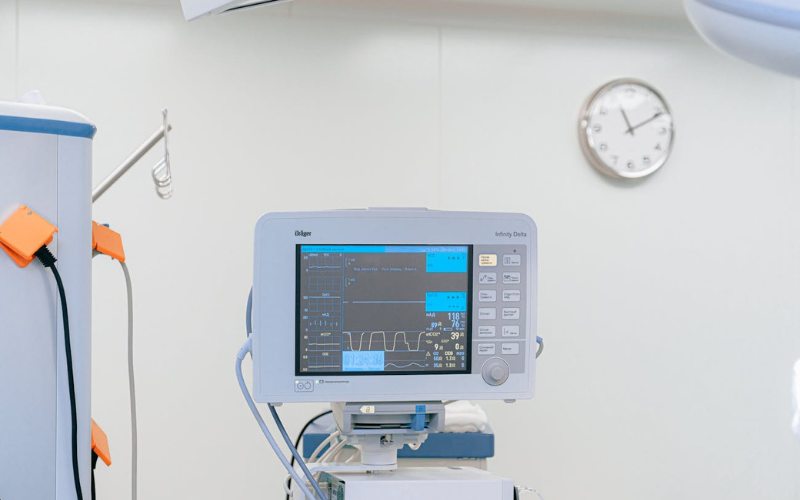Krounchasana: Makes the joints and muscles of the feet flexible:
Kronchasana is also known as crane pose. Kroncha is called stork in the Sanskrit language, in this asana, the raised legs look like the neck of a crane, hence the name of this posture is named Kronchasana.
It is one of the many difficult yoga postures. The joints of the body become flexible by this asana. The practice of Kronchasana is very beneficial for people who have flat feet.
By this asana, the stomach and chest come in their correct shape. At the same time, their work efficiency also increases. If you are suffering from flatulence disease then this asana can be helpful for you.
In English, this asana is also called Heron Pose. In today’s article, we are telling you the method of doing Kronchasan, its benefits, and precautions related to it.
How to do Kronchasana
- First of all, to do this asana, lay a carpet and sit on it with the feet facing forward.
- After this, bend your right leg and move it backward and press it under the hips.
- Maintain the balance of your sitting, so that the weight of the body is evenly on your sitting bones.
- Then grabbing the sole of the left foot with your hands, lift it upwards.
- Without pressure, lift the left leg upwards as much as possible, and keep in mind that during this time the back and head should not be bent, the neck and back should remain straight.
- Now try to bring the left foot to the head.
- Now try to bring the left leg to the head and slowly take deep breaths and stay in this position for 30 seconds.
- Now slowly bring the left leg down and one cycle of this posture is completed.
- Do this asana with the other leg.
Benefits of Kronchasana:
- The flow of blood remains good through Cronchasana.
- While doing this asana, there is pressure on the thighs and calves, which strengthens the muscles and joints of the legs and increases their flexibility.
- Heart and abdominal organs are stimulated by doing Kronchasana.
- It also gets rid of gas in the stomach.
Precautions in Kronchasana:
- There may be some difficulty in doing this asana in the beginning, so do this asana only under the supervision of a yoga guru.
- If there is pain in the knee and ankle, then do not do this asana.
Garbhasana (Embryo Pose) – Very beneficial asana for women:
In Garbhasana, the meaning of the womb is the womb. In this posture, the shape of the body becomes like that of a fetus, hence it is called Garbhasana. This asana is also known as fetus pose, embryo pose, fetus pose.
Garbhasana is especially beneficial for women. This asana seems a bit difficult in the beginning but with its continuous practice, it becomes easy.
Pregnancy does not allow old age to come early. Along with this, the problems related to constipation also go away by continuing to do Garbhasana. Appetite increases by this asana and the weakness of the nerves are removed. And this asana also gives relief from jaundice.
Padmasana, Kukkutasana and Tolangulasana are done before doing this asana. Know how to do Garbhasana, its benefits, and things to keep in mind.
Method to do Garbhasana:
- Take a seat and sit on it in Padmasana position.
- After this, the arms are placed between the thighs and calves of each foot.
- Move-in such a way that your elbows can bend.
- Exhale and raise your legs with your hands.
- Raise your thighs upwards, while simultaneously grasping the ears with the fingers.
- Breathe slowly and stay in this position according to your capacity.
- After this, slowly bring the legs down and come to their starting position.
- Thus one cycle is completed.
- You do this 3 to 5 times.
Embryo Pose Benefits:
- By doing pregnancy, the immune system is strengthened.
- This asana is very beneficial for reducing anger. Also, it calms the mind.
- With its regular practice, you can control yourself.
- Many problems related to women can be solved by this yoga practice.
- By its practice, the child does not experience much pain at the time of birth.
- This asana is useful in the menstrual cycle of women.
- By doing Garbhasana, the puberty of both men and women lasts longer.
Pregnancy Precautions:
- Pregnant women should not do this asana. This asana can be done after 40 days of delivery.
- Do not do this asana even if you have pain in your knees.
- This asana should not be done even in case of back pain.
- This asana should be practiced on an empty stomach or can be done even after three to four hours of a meal.
- If you have a high blood pressure problem then this asana should not be done.
If you want to learn different types of yoga then you can learn a 300 Hour Yoga Teacher Training in Rishikesh, India
Also Read: Tramadol VS Tapentadol




